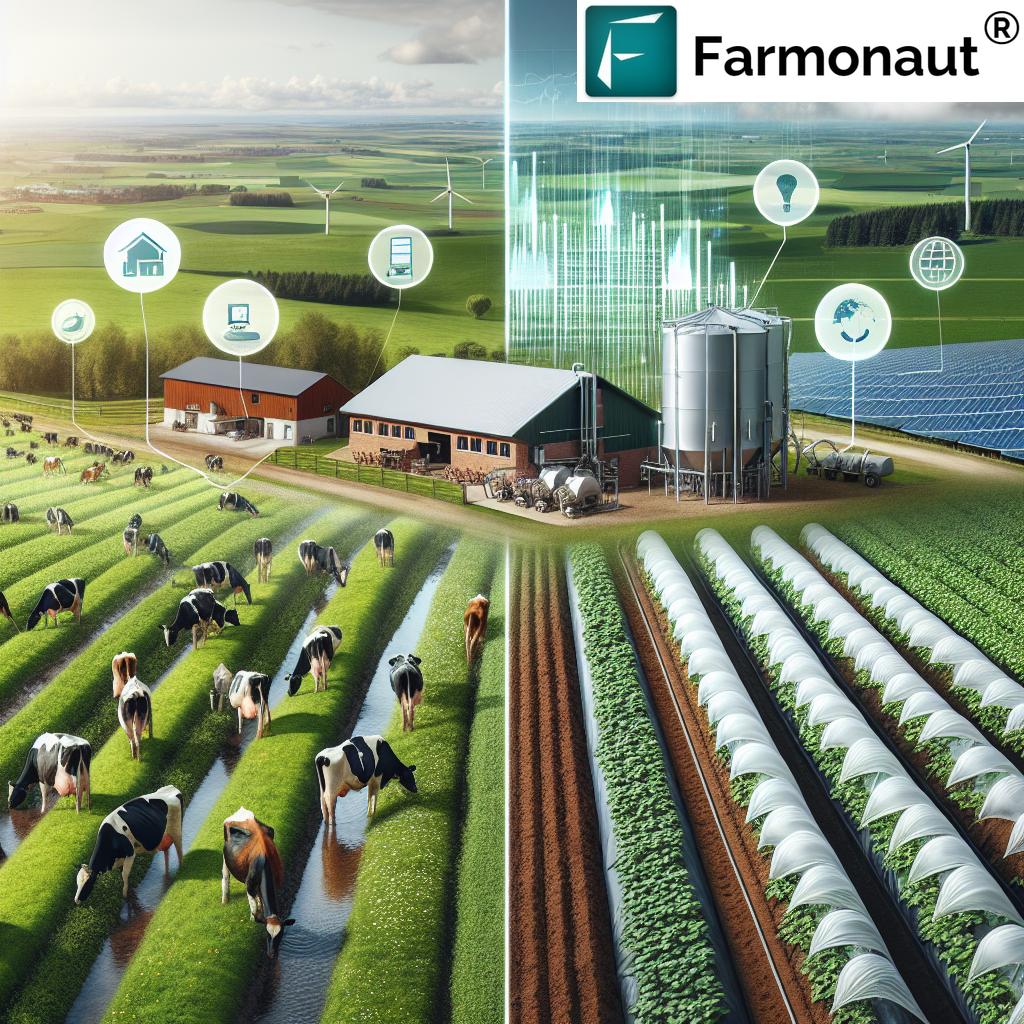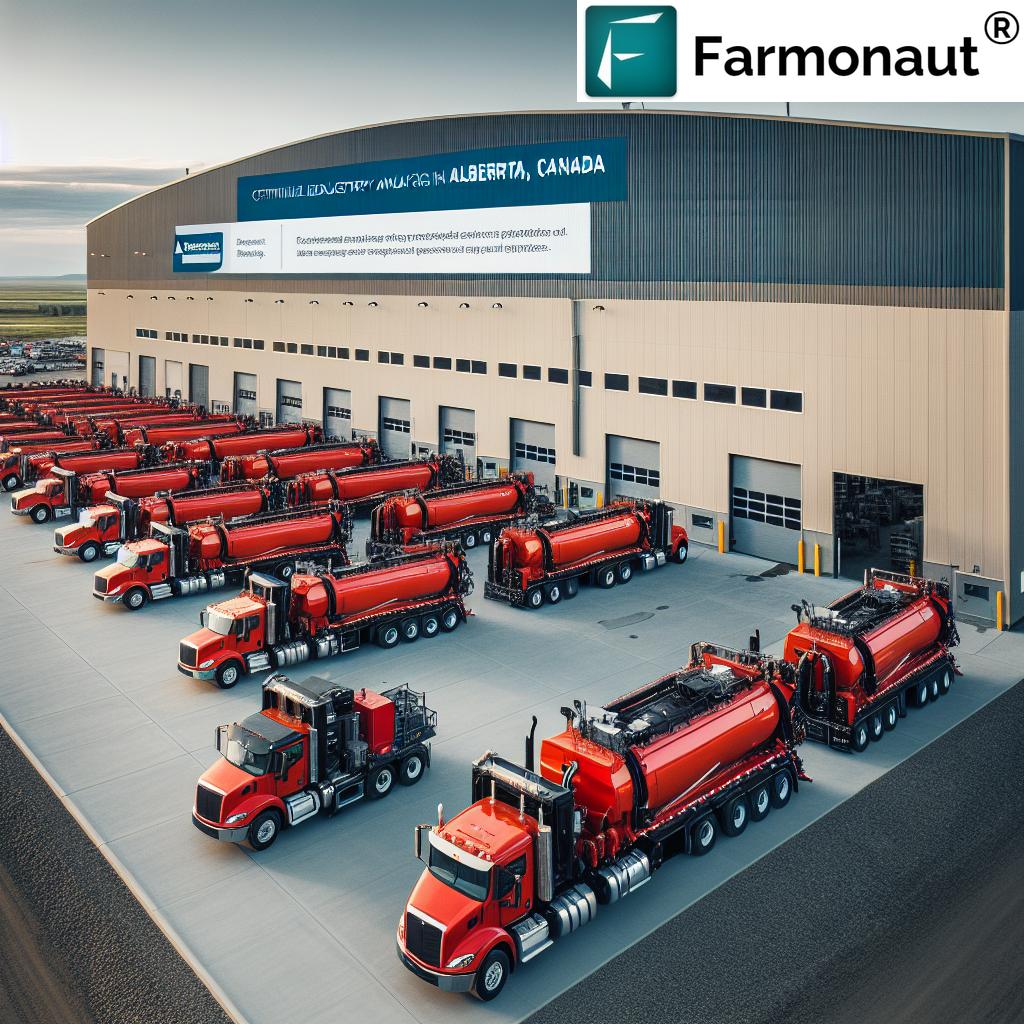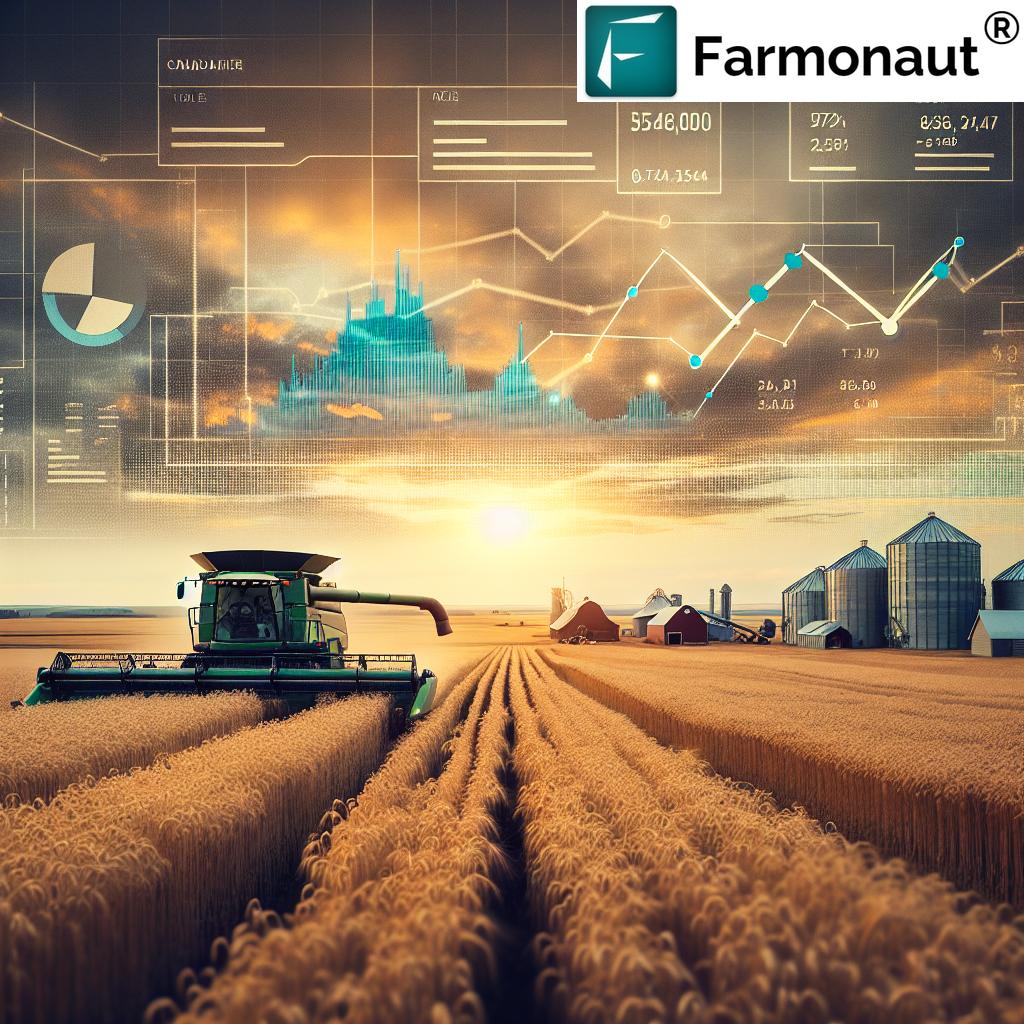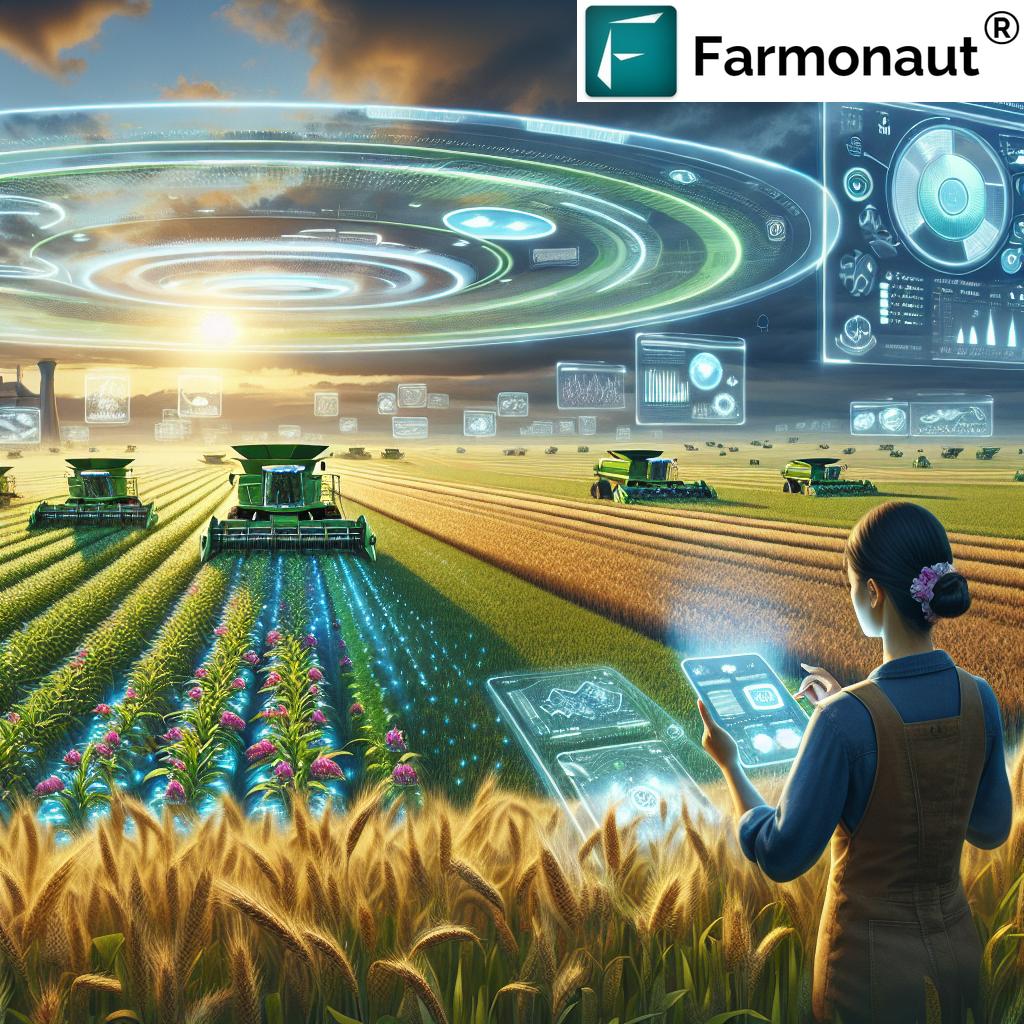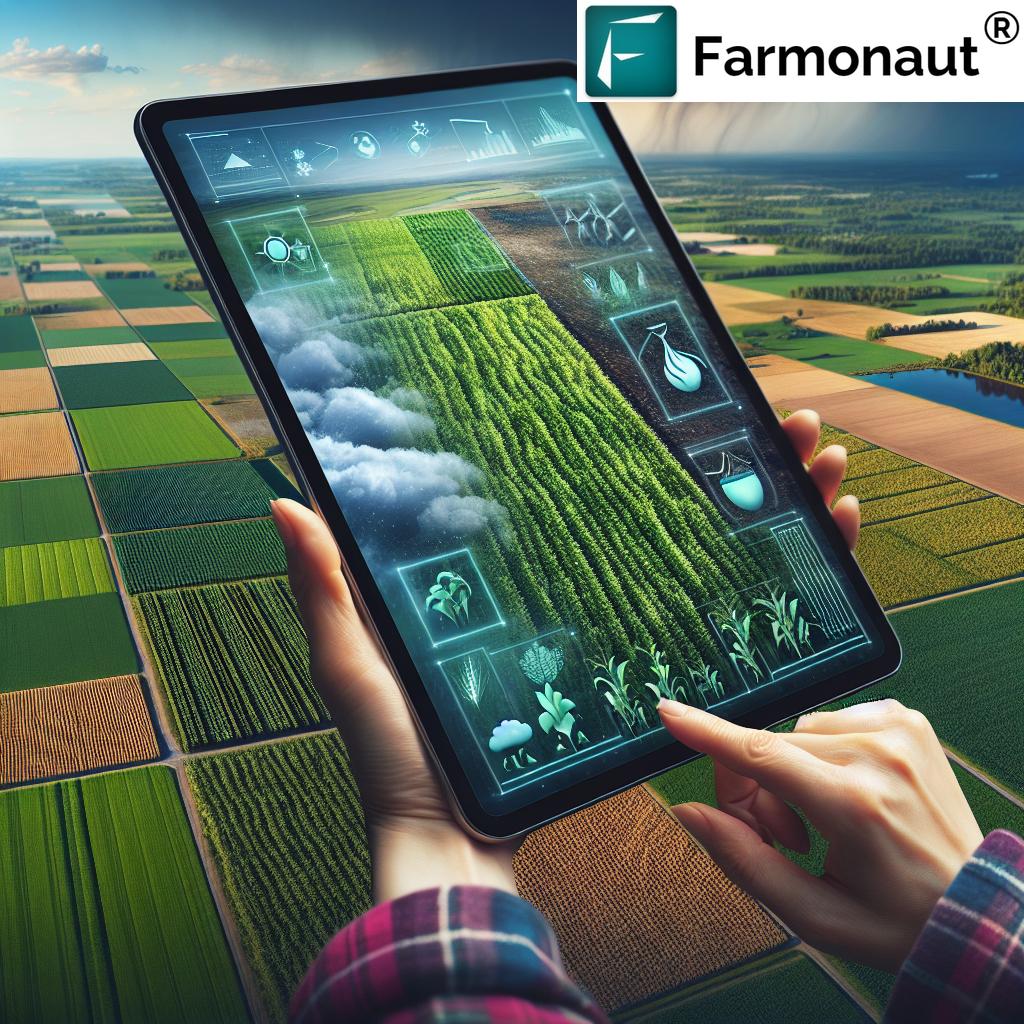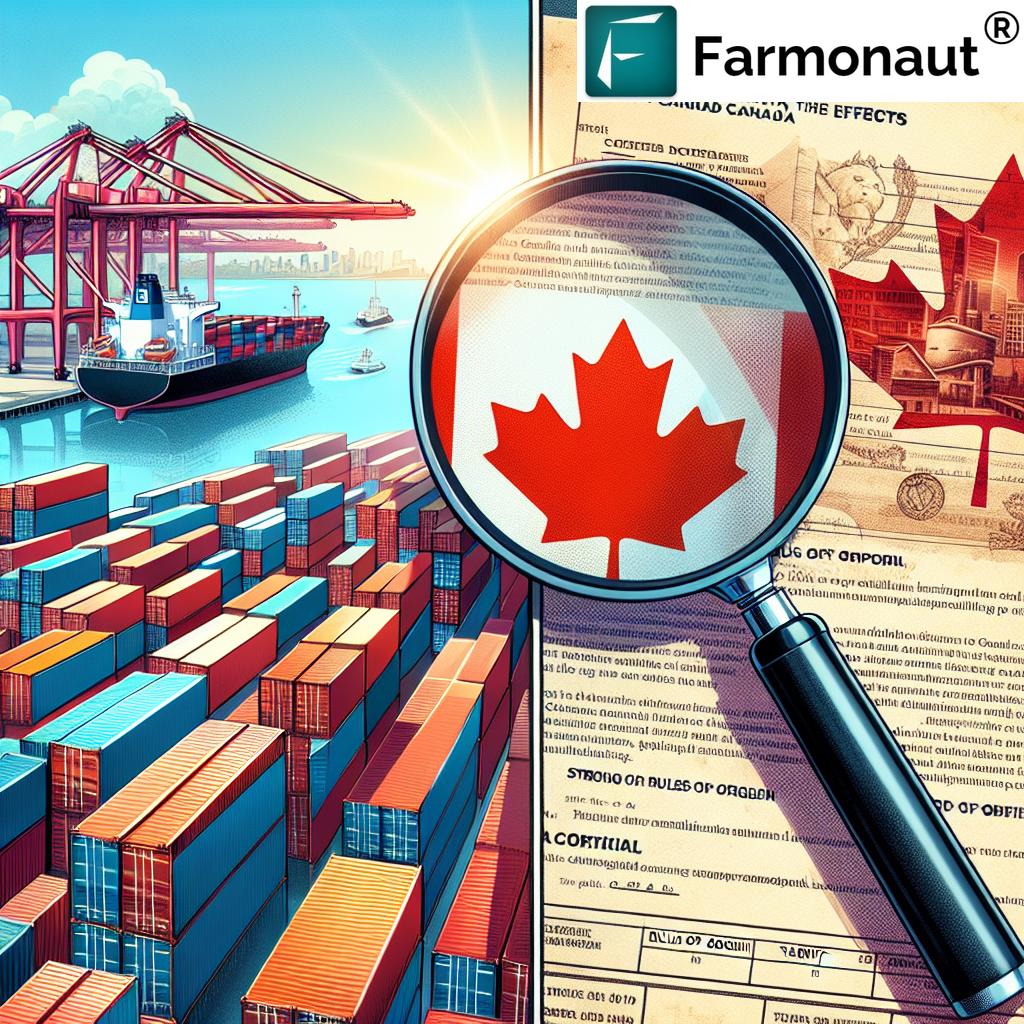Revolutionizing Ontario Corn Farming: Precision Agriculture Technology for Sustainable Yield Optimization
“Ontario corn farmers in Norfolk and Haldimand counties are achieving exceptional yields despite challenging soil conditions using precision agriculture technology.”
Welcome to the future of agriculture in Ontario! As we delve into the world of precision agriculture technology and its transformative impact on corn farming, we’re excited to share insights into how innovative practices are reshaping the agricultural landscape in Canada’s heartland. Our focus today is on the remarkable advancements happening in Norfolk and Haldimand counties, where farmers are pushing the boundaries of what’s possible in corn production.
The Dawn of a New Era in Ontario Farming
As we step into the crisp autumn air of Ontario’s corn fields, it’s clear that a revolution is underway. The traditional image of farming is being replaced by a high-tech, data-driven approach that’s yielding impressive results. In this blog post, we’ll explore how precision agriculture technology is not just improving yields but also promoting sustainable farming practices and environmental conservation.
Let’s begin our journey through the cornfields of Ontario, where technology meets tradition to create a sustainable future for agriculture.
Understanding Precision Agriculture Technology
Precision agriculture technology is the cornerstone of modern farming practices. It encompasses a range of innovative tools and techniques that allow farmers to optimize their crop production while minimizing environmental impact. Here’s a closer look at some key components:
- Satellite-based crop monitoring: Advanced imaging technology provides real-time data on crop health and soil conditions.
- Smart irrigation systems: These systems use sensors and weather data to deliver precise amounts of water to crops.
- Soil management techniques: Advanced soil testing and mapping help farmers tailor their approach to different areas of their fields.
- Farm management software: Digital platforms that integrate various data sources to provide actionable insights for farmers.
These technologies work together to create a more efficient and sustainable farming ecosystem. At Farmonaut, we’re proud to be at the forefront of this agricultural revolution, offering cutting-edge solutions that empower farmers to make data-driven decisions.
The Ontario Corn Farming Landscape
Ontario’s corn farming sector is a vital component of Canadian agriculture. The province’s unique climate and soil conditions present both opportunities and challenges for growers. In Norfolk and Haldimand counties, farmers are leveraging precision agriculture technology to overcome these challenges and achieve remarkable results.
Challenges Faced by Ontario Corn Farmers
- Variable soil conditions across fields
- Unpredictable weather patterns
- Pressure to increase yields while reducing environmental impact
- Rising costs of inputs such as fertilizers and water
Despite these hurdles, innovative growers in Ontario are setting new standards for corn production. By embracing precision agriculture technology, they’re not just surviving; they’re thriving.
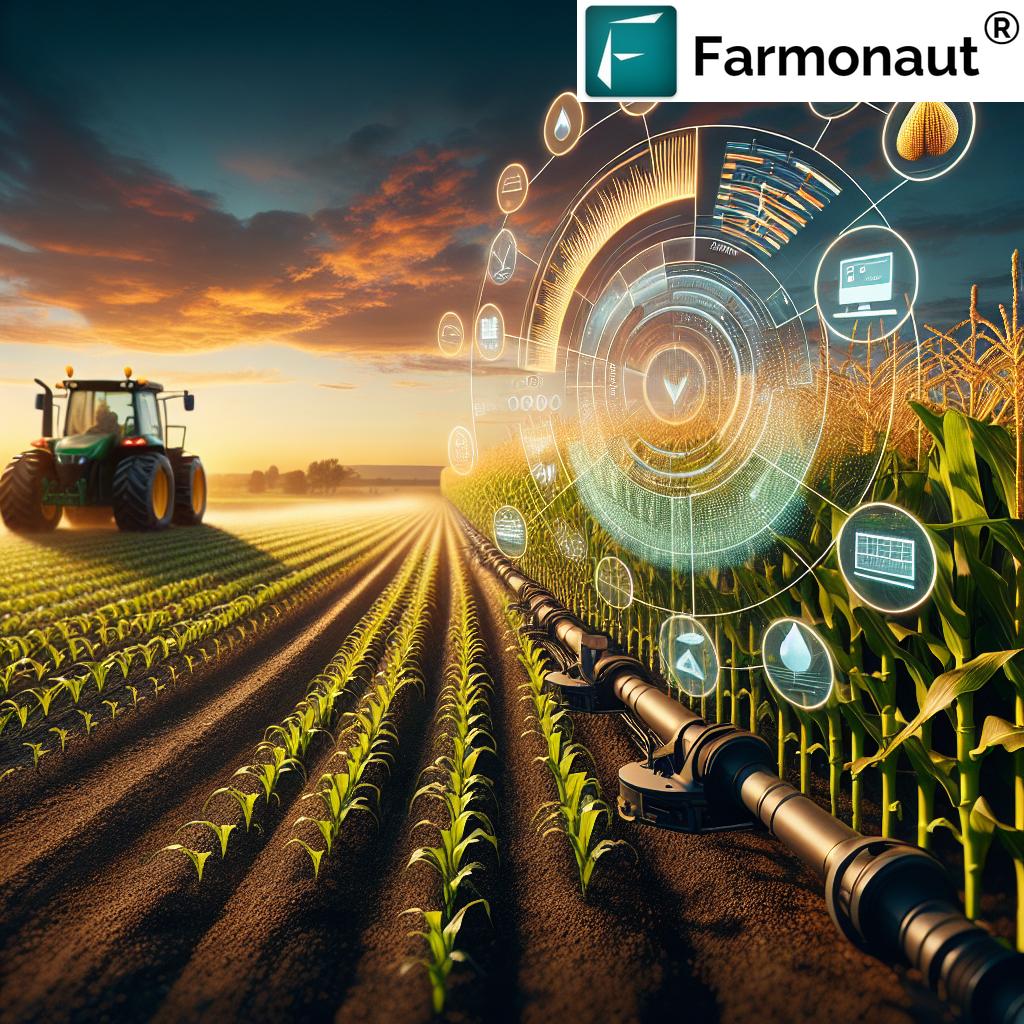
Crop Yield Optimization: The Heart of Precision Agriculture
At the core of precision agriculture technology is the goal of optimizing crop yields. In Ontario’s corn farming sector, this translates to producing more bushels per acre while using resources more efficiently. Here’s how it’s being achieved:
- Variable Rate Technology (VRT): Allows for precise application of inputs based on specific field conditions.
- Crop Health Monitoring: Satellite imagery and drones provide real-time data on crop stress and nutrient needs.
- Predictive Analytics: AI-driven models help forecast potential issues before they impact yields.
These technologies are not just improving yields; they’re revolutionizing the way farmers approach their craft. By providing granular insights into every aspect of crop growth, precision agriculture technology empowers farmers to make informed decisions that lead to sustainable yield optimization.
The Role of Farmonaut in Crop Monitoring
Farmonaut’s satellite-based crop health monitoring system plays a crucial role in this optimization process. Our platform provides farmers with detailed NDVI (Normalized Difference Vegetation Index) maps, allowing them to track crop health throughout the growing season. This real-time data enables quick responses to potential issues, ensuring that every plant receives the care it needs to thrive.
Soil Management Techniques: The Foundation of Healthy Crops
Effective soil management is crucial for sustainable corn farming in Ontario. Precision agriculture technology has revolutionized our understanding of soil health and how to maintain it. Here are some key techniques being employed:
- Precision Soil Sampling: GPS-guided sampling provides accurate soil nutrient maps.
- Variable Rate Fertilization: Tailored nutrient application based on soil needs reduces waste and improves crop health.
- Cover Cropping: Strategic use of cover crops improves soil structure and nutrient content.
- Minimal Tillage: Reduced soil disturbance helps maintain soil health and reduce erosion.
These techniques not only improve soil health but also contribute to environmental conservation by reducing runoff and preserving soil biodiversity.
Smart Irrigation Systems: Maximizing Water Efficiency
Water management is a critical aspect of corn farming in Ontario. Smart irrigation systems are transforming how farmers approach this essential resource. These systems integrate:
- Soil moisture sensors
- Weather data
- Crop water requirement models
By combining these elements, smart irrigation systems can deliver precise amounts of water exactly when and where it’s needed. This not only conserves water but also promotes optimal crop growth by preventing over or under-watering.
“Smart irrigation systems and advanced soil management techniques have significantly transformed traditional crop production approaches in Ontario’s corn farming sector.”
Environmental Conservation in Agriculture
Precision agriculture technology isn’t just about increasing yields; it’s also a powerful tool for environmental conservation. In Ontario’s corn farming sector, we’re seeing significant strides in reducing the environmental footprint of agriculture:
- Reduced Chemical Use: Targeted application of pesticides and herbicides minimizes environmental impact.
- Carbon Sequestration: Improved soil health practices increase the soil’s ability to store carbon.
- Water Conservation: Efficient irrigation reduces water waste and protects local water resources.
- Biodiversity Protection: Precision farming practices help preserve natural habitats and wildlife corridors.
These efforts are crucial in maintaining the delicate balance between productive agriculture and environmental stewardship. At Farmonaut, we’re committed to supporting farmers in their conservation efforts through our advanced monitoring and management tools.
The Crucial Role of Agricultural Weather Forecasting
In the unpredictable climate of Ontario, accurate weather forecasting is invaluable for corn farmers. Precision agriculture technology has brought about significant improvements in this area:
- Hyperlocal Forecasts: Detailed weather predictions for specific field locations.
- Frost Warnings: Early alerts help farmers protect vulnerable crops.
- Precipitation Forecasts: Crucial for planning irrigation and field operations.
- Growing Degree Day Calculations: Help predict crop development stages.
By integrating these advanced forecasting capabilities, farmers can make proactive decisions to protect their crops and optimize their operations. Farmonaut’s platform includes comprehensive weather data, ensuring that our users have the information they need at their fingertips.
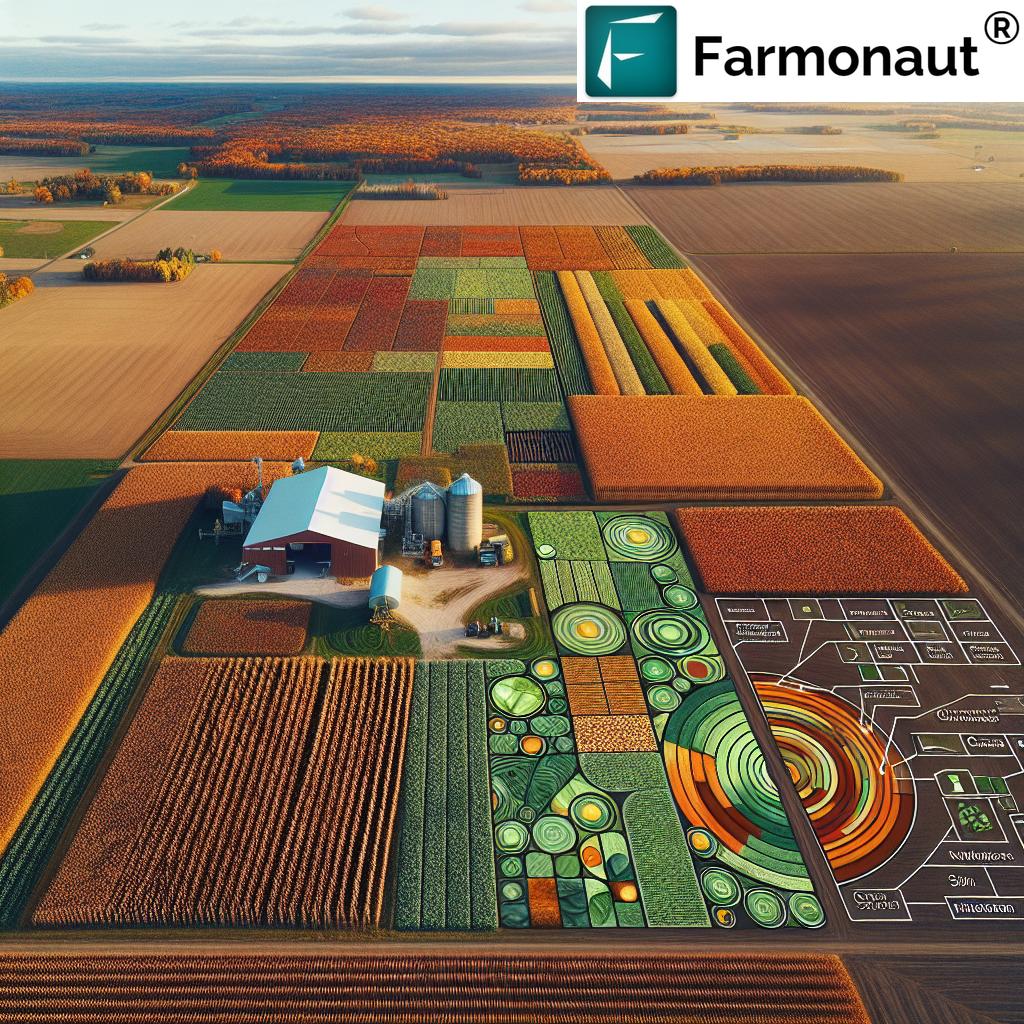
Farm Management Software: The Digital Brain of Modern Agriculture
Farm management software is the central nervous system of precision agriculture. These powerful platforms integrate data from various sources to provide farmers with a comprehensive view of their operations. Key features include:
- Crop planning and rotation tools
- Inventory management
- Financial tracking and reporting
- Equipment maintenance schedules
- Integration with precision agriculture tools
By centralizing all this information, farm management software enables farmers to make data-driven decisions that improve efficiency and profitability. Farmonaut’s platform offers a user-friendly interface that puts all these tools at farmers’ fingertips, accessible from both web and mobile applications.
Agtech Innovations: The Future of Farming
The world of agricultural technology is constantly evolving, with new innovations emerging regularly. Some exciting developments in the agtech space include:
- AI-Powered Crop Disease Detection: Machine learning algorithms that can identify plant diseases from images.
- Robotic Harvesting: Automated systems that can harvest crops with precision and efficiency.
- Blockchain for Supply Chain Transparency: Ensuring traceability from farm to table.
- IoT Sensors: Networks of connected devices providing real-time data on field conditions.
These innovations are shaping the future of farming, and Ontario’s corn farmers are at the forefront of adopting these technologies. Farmonaut is committed to staying ahead of the curve, continually updating our platform with the latest advancements in agtech.
Crop Monitoring Solutions: Eyes in the Sky for Farmers
Satellite-based crop monitoring has revolutionized the way farmers keep track of their fields. These solutions offer:
- Regular, high-resolution imagery of fields
- Vegetation health indices like NDVI
- Early detection of pest and disease outbreaks
- Yield prediction models
For Ontario’s corn farmers, these tools provide invaluable insights throughout the growing season. Farmonaut’s crop monitoring solutions offer user-friendly interfaces that make it easy for farmers to interpret this data and take action.
The Impact of Precision Agriculture on Ontario’s Corn Farming
To truly appreciate the transformative power of precision agriculture technology in Ontario’s corn farming sector, let’s take a look at a comparison between traditional methods and modern precision agriculture techniques:
| Farming Aspect | Traditional Method | Precision Agriculture Method |
|---|---|---|
| Irrigation Management | Uniform watering across fields | Variable rate irrigation based on soil moisture sensors and crop needs |
| Soil Health Monitoring | Annual soil testing | Continuous monitoring with real-time soil sensors and satellite imagery |
| Yield Optimization | Based on historical data and farmer experience | AI-driven predictive models using multiple data points |
| Environmental Impact | Higher risk of over-application of inputs | Reduced chemical use and minimized environmental footprint |
| Resource Efficiency | Generalized approach to resource application | Targeted use of water, fertilizers, and pesticides |
| Weather Forecasting Integration | Reliance on regional forecasts | Hyperlocal weather predictions integrated with farm management systems |
| Conservation Efforts | Limited by lack of precise data | Data-driven conservation practices tailored to specific field conditions |
This table clearly illustrates the significant advancements that precision agriculture technology has brought to Ontario’s corn farming sector. The shift from generalized approaches to data-driven, targeted strategies has not only improved yields but also enhanced environmental sustainability.
The Role of Agricultural Scientists in Advancing Precision Farming
Behind every technological advancement in agriculture are dedicated scientists working tirelessly to improve farming practices. In Ontario, agricultural scientists play a crucial role in:
- Developing new crop varieties suited to local conditions
- Researching sustainable farming practices
- Creating predictive models for crop growth and yield
- Studying the long-term impacts of precision agriculture on soil health
These scientists work closely with farmers and technology providers like Farmonaut to ensure that new innovations are practical, effective, and tailored to the needs of Ontario’s corn farming community.
The Future of Ontario Corn Farming
As we look to the future, it’s clear that precision agriculture technology will continue to play a pivotal role in shaping Ontario’s corn farming landscape. We anticipate:
- Increased adoption of AI and machine learning in farm management
- Greater integration of renewable energy sources in farming operations
- Development of drought-resistant corn varieties through advanced breeding techniques
- Expansion of vertical farming practices to complement traditional field cultivation
At Farmonaut, we’re committed to staying at the forefront of these developments, continuously updating our platform to provide Ontario’s corn farmers with the most advanced tools available.
Conclusion: Embracing a Sustainable, Tech-Driven Future
The revolution in Ontario’s corn farming sector, driven by precision agriculture technology, is more than just a trend—it’s a necessary evolution in the face of climate change and growing global food demand. By embracing these innovative practices, Ontario’s farmers are not only optimizing their yields but also leading the way in sustainable agriculture.
From the fields of Norfolk and Haldimand counties to farms across the province, the impact of precision agriculture is clear. Higher yields, reduced environmental impact, and more efficient use of resources are just the beginning. As we continue to innovate and refine these technologies, the future of Ontario’s corn farming looks brighter than ever.
At Farmonaut, we’re proud to be part of this agricultural revolution. Our commitment to providing cutting-edge, accessible precision agriculture tools aligns perfectly with the forward-thinking approach of Ontario’s corn farmers. Together, we’re cultivating a future where technology and tradition combine to create a sustainable, productive agricultural sector.
As we move forward into this exciting new era of farming, we invite you to join us in embracing the possibilities that precision agriculture technology offers. Whether you’re a seasoned farmer or just starting out, there’s never been a better time to explore how these innovations can transform your approach to corn farming.
Let’s work together to ensure that Ontario remains at the forefront of agricultural innovation, producing bountiful harvests while preserving our precious natural resources for generations to come.
FAQ Section
Q: What is precision agriculture technology?
A: Precision agriculture technology refers to a suite of tools and techniques that allow farmers to optimize crop production while minimizing environmental impact. This includes satellite-based crop monitoring, smart irrigation systems, soil management techniques, and farm management software.
Q: How does precision agriculture benefit Ontario corn farmers?
A: Precision agriculture helps Ontario corn farmers by providing real-time data on crop health, optimizing resource use, improving yield predictions, and enabling more efficient farm management. This leads to higher yields, reduced costs, and more sustainable farming practices.
Q: What role does Farmonaut play in precision agriculture?
A: Farmonaut provides advanced satellite-based farm management solutions, including crop health monitoring, AI-based advisory systems, and resource management tools. Our platform helps farmers make data-driven decisions to improve their productivity and efficiency.
Q: How does precision agriculture contribute to environmental conservation?
A: Precision agriculture promotes environmental conservation by reducing chemical use, improving water efficiency, enhancing soil health, and minimizing the overall environmental footprint of farming operations.
Q: Are precision agriculture technologies accessible to small-scale farmers?
A: Yes, many precision agriculture technologies, including Farmonaut’s solutions, are designed to be accessible and affordable for farmers of all scales. Our goal is to democratize access to these innovative tools.
For more information on how Farmonaut can help revolutionize your farming practices, visit our web app or check out our API for developers. You can also find detailed information in our API Developer Docs.





